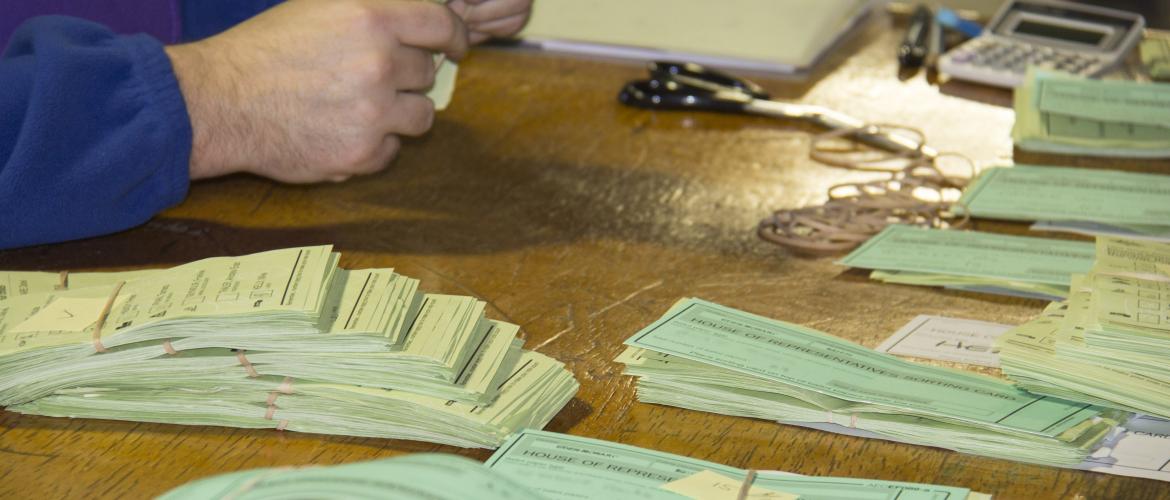Australia’s pre-election polls prove inaccurate
May 27, 2019 | Expert Insights

Background
Australia’s parliament comprises the House of Representatives (the lower house) and the Senate. The House consists of 151 members, elected for three years in a preferential vote. The Senate consists of 76 members, each with a six-year term, selected through a system of preferential, proportional representation. Half of the Senate seats expire in a fixed three-year rotation, coinciding with elections for the House of Representatives.
Australia went to the polls in mid-May 2019, in an election that pits the Labor Party against the incumbent Prime Minister, Scott Morrison. Early opinion polls, even those before the elections, illustrated a lead for the Labor Party. Mr Morrison’s coalition of the Liberal Party and the rurally-focused Nationals Party would have an upward challenge. The coalition’s instability is evidenced by their three PM’s in six years. Mr Morrison touted his economic credentials, framing the elections as a referendum on his ability to manage Australia’s economy. Other key electoral considerations in the 2019 elections were taxation, climate change and foreign interference.
Pre-election opinion polls typically survey a random sampling of people that best represents a given constituency. Exit-polls secure opinions of people leaving a polling station, asking how they voted.
Analysis
Prime Minister Scott Morrison’s Liberal-National coalition is expected to be re-elected following Australia’s 2019 general elections. Election projections show that Mr Morrison’s coalition will hold at least 77 seats in the 151-member lower house, one more than what is required for a party to form a government. The Labor Party, which was expected to win, will claim at least 68 seats, while other factions will take six. Despite the results of the lower house, the coalition will not secure a majority in the Senate. This means that it will need the support of independent candidates and minor parties to pass legislation in the upper house. A formal count by the Australian Electoral Commission is expected shortly.
Ahead of the vote, at least 16 option polls were published. These analysed electoral preferences between the two parties; Labor and the Liberal-National coalition. All of them predicted that the Labor Party would win 48% or 49% of the two-party preferred vote, with Labor winning the elections by 51% or 52%. The polls helped steer national conversations, making them a central component of public perception of Australia’s 2019 elections. Although polling experts said that the expected results are within the 3% margin of error, the projections made prior to the elections were mostly inaccurate.
Peter Lewis of Essential Research, an agency that works closely with election candidates, questioned automated polling methods. Robo-polls, which are conducted using automated calls to fixed telephone lines, are a preferred choice of pollsters because of its low costs. However, such types of polling have low response rates, especially among younger voters. Mr Lewis said, “We treat polls with more import than they may deserve given the margin of error… We obviously need to go back to (the) model and see how it held up.”
Regardless of automation, opinion polling is often subject to several variables. Central to such polls is the ability to secure a random sample. A random sample is intended to achieve a representation of Australia closest to its current demographic and political climate. Random sampling allows pollsters to predict results without spending money to survey everyone, an expensive task. Securing such an accurate representation is getting increasingly difficult as fewer people are likely to agree to be interviewed than in decades past. Additionally, random sampling itself has its shortfalls; it is subject to sampling error. Sampling error is the uncertainty in a poll caused by only surveying a subset of people, rather than everyone. The number of people polled is directly proportional to the accuracy of the results, which in turn corresponds to the cost of surveying.
Brian Schmidt, a Nobel Laureate in physics and the vice-chancellor of the Australian National University, also believes that “the polls have been manipulated, probably unintentionally, to give the same answers as each other.” Prof Schmidt calculated the odds of sixteen polls coming to the small spread of results while accounting for the number of people surveyed. The odds he arrived at is greater than 100,000 to 1, leading him to conclude that the polls have been unintentionally manipulated. He says “unintentionally because humans are biased towards liking to get the same answer as everyone else.” This form of statistical confirmation bias innately skews the results of polls.
Assessment
Our assessment is that pre-election polls are subject to several variables that undermine its accuracy, including the difficulty in selecting a representative random sample, automation and statistical confirmation bias. We feel that exit-polls are a better representation of polling habits than pre-election polling. We think that the importance given to pre-election surveys is unwarranted, considering the importance of this information finally to the electorate. Confirmation bias on a large scale is likely as pre-election polling helps form the central narrative of any election. As other sources of information succumb to manipulation, we feel electoral polling requires independent investigation into the methodology used and transparency in the collection of data and its statistical application.
Image Courtesy - Australian Electoral Commission [CC BY 3.0 (https://creativecommons.org/licenses/by/3.0)]








Comments